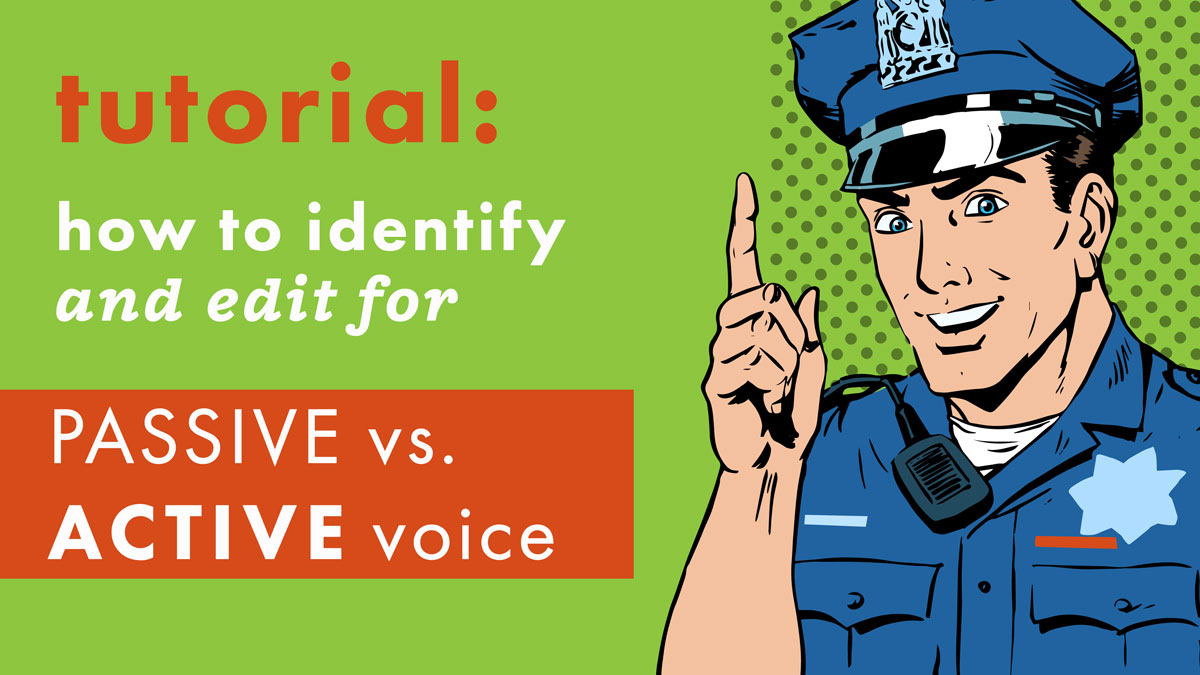
Last week, I shared a few shortcuts I use to edit my writing for preposition bloat.
I started there because cutting prepositions gives you such a strong return on your editing investment – when you go through the steps to fix it, you end up fixing a lot of other problems too.
One of these is passive voice. And the process also works in reverse – when you edit for passive voice, you tend to kill prepositions.
To fully untangle your run-on sentences, it’s helpful to look for both. Here’s how to do it:
Quick refresher: active voice v. passive voice
In the active voice, somebody or something does something (maybe to something or somebody). I kicked the ball.
The active voice is easy to read. It gives sentences life. It presents ideas clearly and confidently. It cuts to the chase. It’s human. And linguistic studies have shown that people retain information better if they read it in the active voice.
In the passive voice, something is done to something or somebody else (and we’re not always sure who did it). The ball was kicked by me. {or} The ball was kicked.
The passive voice requires more words (30-40%). And those words are usually weak ones like is, am, are, were, the, by, and of. Passive voice can leave a lot of things open to interpretation. And its pseudo-scholarly tone can make you sound like a bot. When you write in the passive voice, you’re asking your readers to spend more time reading weaker, more boring words. It’s no way to build rapport.
Why is this important?
Because this is a blog for people who write at work, and most of don’t write about super-exciting things on the job. If you market insurance, health care, software, financial services, or B2B anything, you know the struggle.
As marketers, it’s our job to inject energy into these topics. To keep the audience awake and engaged. To find the human elements. Ideally, the beauty. But at the very least, it’s our job to make the medium a pleasure so the message gets absorbed. A spoonful of sugar – that’s you.
Here’s an overview of how to edit for passive voice:
To summarize:
First of all, identify the subject of your sentence. Who, or what, is driving the bus?
Does the subject come before or after the verb? If after, you’ve probably got passive voice (The bus was driven by me).
(Correction: “I drove the bus.”)
And then there are the sneakier instances of passive voice (The bus was being driven).
Identify these by adding “by the grammar police” after the verb. If the sentence still works, you’ve got passive voice with a missing subject. (The bus was being driven by the grammar police). It works, and it’s passive.
Give your bus driver a name, add it to the front of your sentence, and watch a more vivid picture come to life.
(Correction might be: “The grammar police officer was driving the bus”, or “He was driving the bus.” )
For easy reference, here’s a printable one-sheet with more tricks for identifying passive vs. active voice, as well as a list of all the different active and passive verb constructions.
Keep it on hand, and always try to make your sentences active if you can.
That all said… the passive voice is sometimes okay.
Every once in a while, the passive voice is the better way to go. In certain cases, it’s better for the flow of the paragraph, and it isn’t too confusing. My advice: learn to identify it, try to edit for it, and if you don’t like the edited active-voice version, trust your gut and go back to the original.
After all, the best thing about learning the rules is knowing when they should be broken.
Sorry, grammar police.
